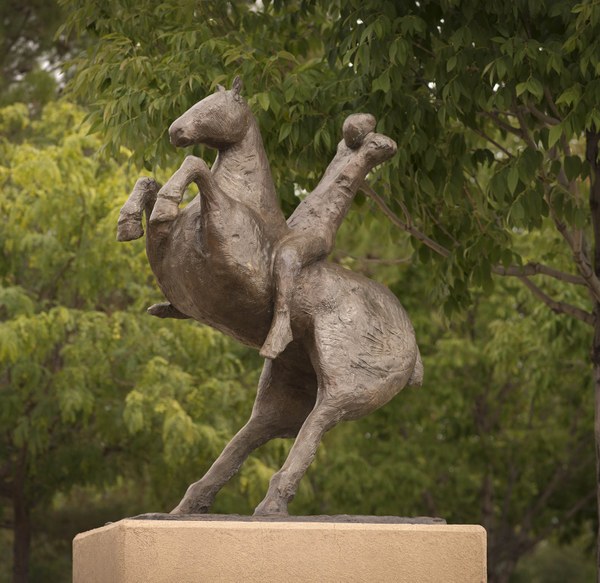Fritz Scholder, The Last Ride
On view in the East Garden
Fritz Scholder
Luiseño
1937 Breckenridge, Minnesota – 2005 Phoenix, Arizona
The Last Ride
1990
bronze, ed. 7/7
Albuquerque Museum, museum purchase, 1991 General Obligation Bonds and 1% for Art Funds, City of Albuquerque
PC1992.99.1
Fritz Scholder’s artwork challenged both the conventional artistic representations of Native Americans and the expectations placed on contemporary Native American artists. The Last Ride depicts a rider on horseback, a common motif in public sculpture. The figure and the horse, however, are anonymous abstracted forms rendered with few naturalistic details. Scholder’s sculpture challenges the ideas of memorializing individuals as a way of commemorating history. In many of his paintings, Scholder depicts Native Americans in highly abstract portraits that contrast with the overly romanticized imagery of Indigenous peoples that is common throughout the Southwest. Scholder, who was one-quarter Luiseño, did not grow up identifying as indigenous; he pushed artistic and political boundaries by painting Native Americans in settings that were considered unconventional.
Along with fellow instructors Allan Houser and Charles Loloma at the Institute for American Indian Art, Scholder contributed to changing how Native American Art was perceived. Their work demonstrated how Native American artists incorporated a many subjects, styles and methods which expanded the context of Art History and contemporary American Indian Art.

